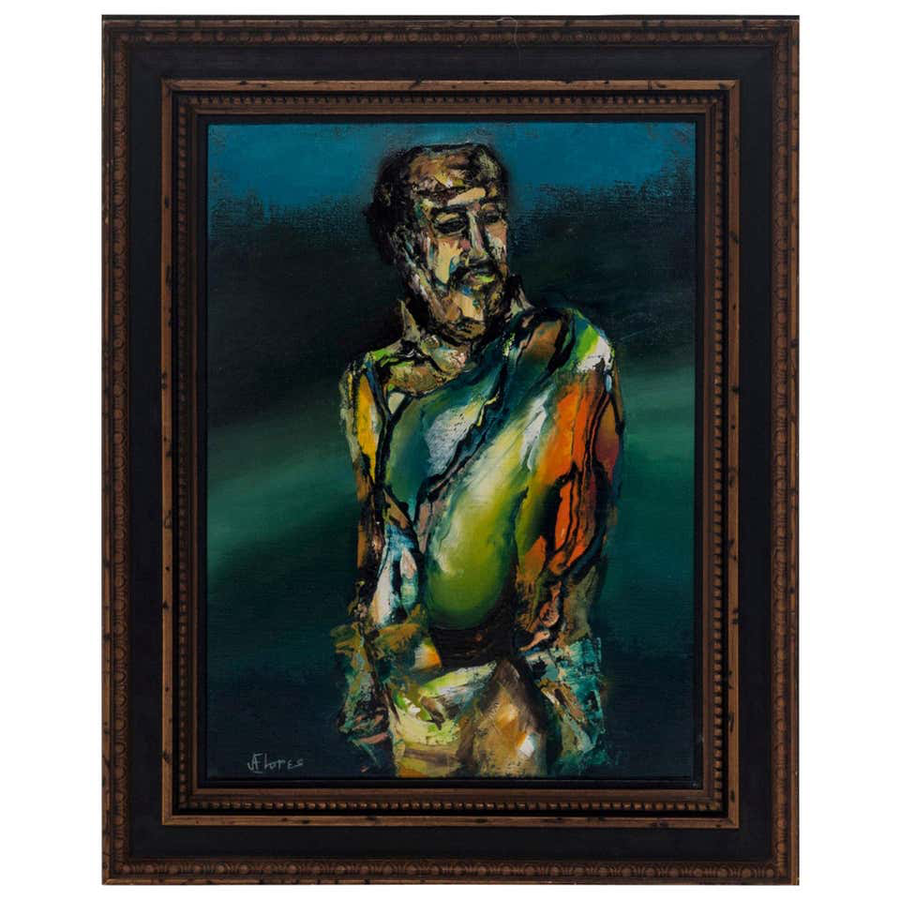Checking Out Iconic Artists and Their Impacts on Figurative Oil Painting
Checking Out Iconic Artists and Their Impacts on Figurative Oil Painting
Blog Article
The Role of Feeling and Expression in Figurative Oil Painting: A Comprehensive Evaluation of Topic and Make-up
The interplay of feeling and expression in metaphorical oil painting acts as a crucial lens via which one can examine the elaborate partnership in between subject and make-up. Artists harness numerous techniques, from shade choice to brushstroke characteristics, to cultivate emotional vibration within their jobs. This nuanced orchestration not only forms visitor assumption yet also invites a deeper query right into how these components integrate to mirror the complexities of human experience. As we discover this rich terrain, one need to think about exactly how details study brighten the more comprehensive effects of these imaginative selections.
Comprehending Emotion in Art
Feeling in art works as a powerful avenue for expression, permitting artists to share intricate sensations via their work. In metaphorical oil paint, this emotional deepness is commonly portrayed with the representation of the human figure, catching the subtleties of human experience. The choice of topic, shade palette, and brushwork all add to the emotional resonance of a piece.
Artists often bring into play individual experiences, social concerns, or universal styles to stimulate feelings in the customer. For circumstances, a portrait may mirror vulnerability, while a vibrant number in motion can represent flexibility or turmoil. These psychological threads connect the visitor to the art work, promoting a dialogue that transcends the visual medium.
Moreover, the interplay in between light and darkness can magnify psychological intensity, directing the visitor's gaze and accentuating specific elements within the make-up. Using appearance in oil painting even more adds layers of complexity, inviting a tactile action that enhances the emotional experience. On the whole, comprehending feeling in art is essential for appreciating the subtleties that identify figurative oil paint, as it transforms mere representation right into a profound expedition of the human problem.
Crucial Element of Make-up
In the world of metaphorical oil painting, the make-up functions as the underlying structure that arranges visual components and enhances the psychological narrative. Crucial elements of structure include equilibrium, contrast, prime focus, and rhythm, each contributing to the overall influence of the artwork.
Equilibrium describes the distribution of visual weight within the paint, which can be attained with in proportion or unbalanced plans. A healthy make-up provides stability, allowing the viewer to involve with the piece sympathetically - figurative oil painting. Comparison, on the other hand, includes juxtaposing various elements, such as light and dark or cozy and trendy shades, to assist the audience's eye and evoke emotional reactions
The focal point is crucial, as it routes attention to the most substantial part of the paint, usually highlighting the emotional core of the narrative. By masterfully incorporating these crucial elements, artists can craft compelling and emotionally powerful figurative oil paints that astound and involve their target market.
Subject and Its Impact
Subject plays a crucial duty in metaphorical oil paint, as it not just functions as the structure for the story yet also forms the viewer's interpretation and emotional interaction with the art work. The option of subject matter-- be it a solitary figure, a team dynamic, or a thematic depiction-- straight affects the emotional ambience conveyed to the target market.

As an example, pictures frequently evoke individual connections, disclosing the details of human expression and personality, while scenes illustrating communal activities can develop a feeling of belonging or nostalgia. The social and historical context of the subject issue improves the customer's understanding, prompting deeper representations on societal standards, values, and the human problem.
Various subjects additionally produce differing degrees of engagement; a dramatic conflict portrayed via figures in tension might generate sensations of anxiety or empathy, while tranquil landscapes can invoke harmony and reflection. Ultimately, the impact of subject in figurative oil painting is profound, as it works as an avenue for psychological vibration, look at more info directing the visitor's response and analysis, and cultivating a connection in between the art work and the viewer. This interaction is necessary for the effective interaction of the musician's intent.
Strategies for Evoking Feelings
The efficiency of figurative oil paint in conveying emotions is considerably influenced by the methods employed by the musician. Among one of the most vital approaches is making use of color theory, where the critical choice of hues can stimulate particular emotional feedbacks. Cozy colors, such as reds and oranges, usually evoke feelings of passion or aggressiveness, while cooler tones like blues and environment-friendlies often tend to stimulate calmness or despair.
Another crucial technique is the manipulation of light and shadow, referred to as chiaroscuro. This method boosts the three-dimensionality of figures, developing significant contrasts that can increase psychological depth. The positioning of light can lead customers' feelings, highlighting certain components of the composition.
Brushwork additionally plays an important duty; loose, meaningful strokes can share energy and spontaneity, whereas smoother strategies could suggest harmony or accuracy. The setup of topics within the make-up can affect emotional visit homepage influence. Close distance can recommend affection, while range might indicate isolation.
Eventually, the combination of these strategies enables musicians to craft narratives that reverberate with the customer, transforming a simple visual experience into an evocative emotional journey. - figurative oil painting

Situation Studies of Notable Works
Checking out significant jobs of figurative oil painting discloses how different techniques are used to stimulate effective emotions. One excellent situation is Edvard Munch's "The Scream," where the altered figure and swirling history communicate existential fear. Munch's use color-- deep blues and dazzling oranges-- intensifies the emotional impact, showcasing how combination options can form customer experience.
Another significant job is Pablo Picasso's "Les Demoiselles d'Avignon." Here, fragmented kinds and vibrant brushstrokes mirror a tumultuous psychological landscape, testing standard depictions of the female figure. Picasso's innovative make-up not just records the audience's interest but additionally welcomes consideration on themes of identity and sexuality.
In Addition, Frida Kahlo's "The Two Fridas" offers a touching exploration of duality and self-identity. The contrasting numbers, linked by a common heart, exemplify Kahlo's psychological deepness and personal narrative. figurative oil painting. Her thorough interest to information and symbolic elements offer to involve customers on a natural level
These study highlight the extensive link between feeling and composition in figurative oil paint, exposing just how you could check here artists harness technique to connect complex feelings and stories that resonate across time and society.

Conclusion
To conclude, the interaction of emotion and expression in figurative oil paint substantially enhances the viewer's experience and analysis of the artwork. Via a cautious choice of subject and compositional strategies, musicians communicate extensive narratives that resonate on both individual and global degrees. The application of shade concept, chiaroscuro, and brushwork additional intensifies emotional deepness, transforming each canvas into an effective representation of the intricacies of the human experience.
In figurative oil paint, this emotional deepness is usually represented with the representation of the human number, recording the subtleties of human experience.Furthermore, the interplay in between light and darkness can enhance emotional intensity, directing the viewer's stare and drawing focus to particular components within the composition. The usage of texture in oil paint even more adds layers of complexity, inviting a responsive response that enhances the psychological experience.The focal point is essential, as it routes interest to the most considerable component of the painting, commonly highlighting the psychological core of the story. Eventually, the influence of subject issue in figurative oil paint is extensive, as it offers as a conduit for psychological resonance, leading the audience's action and interpretation, and promoting a connection between the viewer and the art work.
Report this page